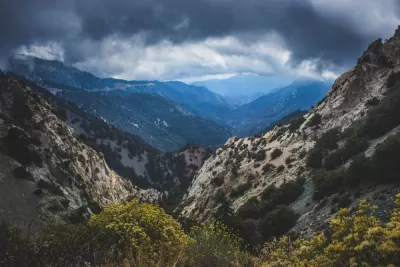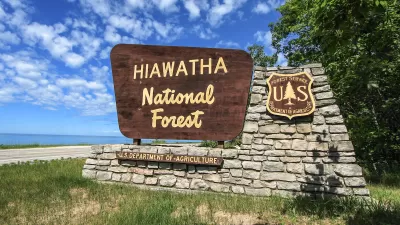New data shows more people than ever visited national forests and grasslands last year, according to a Forest Service report

Not only were local parks, beaches, and trails popular destinations during the pandemic, national forests were highly visited as well. According to a newly released Forest Service report, national forests and grasslands received 168 million visits in 2020, an increase of 18 million when compared to 2019. The report, compiled by the Forest Service’s National Visitor Use Monitoring program, shows the greatest increase in visits occurred between May and October of last year. Dispersed recreation sites and wilderness areas saw the most significant increases, with an estimated 25% growth in visitation overall. Visits to those areas surged even higher in the summer months when compared to 2019. The data also shows that visitors enjoyed their experience, with 95% of visitors reporting being satisfied or very satisfied with their visit.
Completed in five-year cycles, the National Visitor Use Monitoring reports information the Forest Service uses to manage recreation to meet visitor demands while continuing the care for the long-term health and productivity of U.S. national forests and grasslands.
FULL STORY: New Data Shows Visits Soared Across National Forests in 2020

Planetizen Federal Action Tracker
A weekly monitor of how Trump’s orders and actions are impacting planners and planning in America.

Congressman Proposes Bill to Rename DC Metro “Trump Train”
The Make Autorail Great Again Act would withhold federal funding to the system until the Washington Metropolitan Area Transit Authority (WMATA), rebrands as the Washington Metropolitan Authority for Greater Access (WMAGA).

The Simple Legislative Tool Transforming Vacant Downtowns
In California, Michigan and Georgia, an easy win is bringing dollars — and delight — back to city centers.

In These Cities, Most New Housing is Under 441 Square Feet
With loosened restrictions on “micro-housing,” tiny units now make up as much as 66% of newly constructed housing.

Albuquerque’s Microtransit: A Planner’s Answer to Food Access Gaps
New microtransit vans in Albuquerque aim to close food access gaps by linking low-income areas to grocery stores, cutting travel times by 30 percent and offering planners a scalable model for equity-focused transit.

This City Will Pay You to Meet Your Neighbors
A North Kansas City grant program offers up to $400 for residents to throw neighborhood block parties.
Urban Design for Planners 1: Software Tools
This six-course series explores essential urban design concepts using open source software and equips planners with the tools they need to participate fully in the urban design process.
Planning for Universal Design
Learn the tools for implementing Universal Design in planning regulations.
Smith Gee Studio
City of Charlotte
City of Camden Redevelopment Agency
City of Astoria
Transportation Research & Education Center (TREC) at Portland State University
US High Speed Rail Association
City of Camden Redevelopment Agency
Municipality of Princeton (NJ)



























